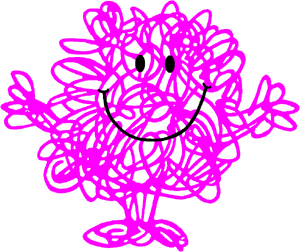How to get through to students who don’t listen…
“Yoi!”, I commanded.
“Osu!”, the class responded.
“Bassai Dai”, I said.
“Bassai Dai”, they announced.
“Hajime!”
My advanced junior class began their kata. Two or three looked super sharp, crisp with their technique, fast with their turns and with a visual intensity strong enough to burn holes.
Then there were students whose techniques reminded me of drowning men, arms flailing as they tried to keep up with the higher ranks.
They were speeding through their kata without focus or connection, bouncing from one stance to the next, colliding like pinballs during multi-ball bonus time. I was frustrated because I’d reinforced the importance of good solid basics when practicing kata many times in the past. I pinched the bridge of my nose and closed my eyes as I thought how best to address this debacle.
“Yame!”, I said. “Come over here to the white board and take a seat.”
(Yes, I have a white board at the dojo – and it’s a great idea to write notes and explain things from time to time)
“Ok… I need a volunteer please”, I requested.
Several hands shot up and shouts of “Me, me, me!” could be heard.
“Ok, David, (name has been changed to protect the innocent) would you come up here and write your name on the board as nicely as you can please?”
David wrote his name nicely as requested.
“What do you guys think? Did David do a nice job? I think so. Now this time David, I want you to write your name a quickly as you can as soon as I say go. Got it?”
“Yes”, he replied.
“Go!”
The scribble that came out from his marker reminded me of Mr. Messy from the Mr. Men book series.
“Ok, thanks buddy. Would someone else like to have a turn?”
I chose 3 more students to come up and try the same experiment. And guess what… all had similar results.
“So what did you guys just learn?”, I asked.
“When you write fast it’s messy?“, a student replied with a silly grin on his face.
“Kind of like rushing your kata, right? When you don’t take time to complete your technique and you try to keep up with other students, your kata kind of looks like that.”
An “a-ha” moment washed over some students’ faces.
“Remember kata is an INDIVIDUAL thing, not a group thing unless you’re competing in a synchronized event. So take your time to do your technique properly and completely. Don’t worry about keeping up with anyone else. Do it right, then later on once your technique is solid, we’ll work on the speed and timing. Got it?”
“Osu!”, responded the class.
Sometimes all it takes is a little analogy or a different perspective to get through to junior students.
Let me give you another example…

In the same class I have student who is constantly overly-dramatic with everything he does. If he falls over (which he seems to do quite often) he lies on the floor like he’s been mortally wounded. When the class is doing basics, he struggles to keep still after he completes his technique. I had talked to him about it loads of times but it just wasn’t getting through.
So earlier this week during the basics portion of class, I asked him to stand next to me at the side of the tatami while the class continued. After each oi-zuki (lunge punch) I asked him, “Do you see that?”, as I quietly pointed another student whose technique was a little shaky.
“Yes”, he replied.
“That’s what your technique looks like. Now take a look at Joseph, and watch his technique”, I whispered. At the completion of the next technique I asked him what the difference was. He identified the first student as shaky and the second one as perfectly still.
“Ok, so I want you to be like Joseph from now on. Can you do that?”
“Osu!”, he replied.
Contrast these approaches to simply barking orders, “C’mon faster! Stronger! Sharper!”. Worlds apart in teaching methodology and can you guess which gets better results?
Sometimes students think they’re doing everything perfectly until they realize they’re not. These teaching methods are powerful tools to help students come to their own realizations about their technique….. and that, is the most powerful teacher of all.

Jim Doan
Brilliant! I am going to try this.
Jason Stanley
You’re welcome!
Pat Fineday
Yes! I’m going to do this in my next class. Thanks!
Joe
HI Jason,
thanks for the great examples !
Joe
Jason Stanley
You’re welcome Joe!
Alan
Jason,
I’m so pleased you have students like I have. There is a white board in place at the premises where I teach. Boy oh Boy is it gonna get used.
Love it!!
Many thanks regards Alan
Danni
Excellent idea Jason,
We have a white board in our Dojo too and I’m going to give this a try.
PS. I really appreciate the time you dedicate to helping others.
Thankyou
Leigh-Jay Ascension
Hi Jason, I love it. I will try it tomorrow. I was showing a new instructor some tools in teaching today and i said to him watch this. I then proceeded to have a strong focus above the kids eyes levels. After a few breaths, i proceeded to do Kihon exercises slowly and the fast with out saying a word. Moving with breath. The result was fantastic. All kids performed even better than when i spoke and even without correction they were correcting themselves. The silence was powerful.
regards Leigh-Jay